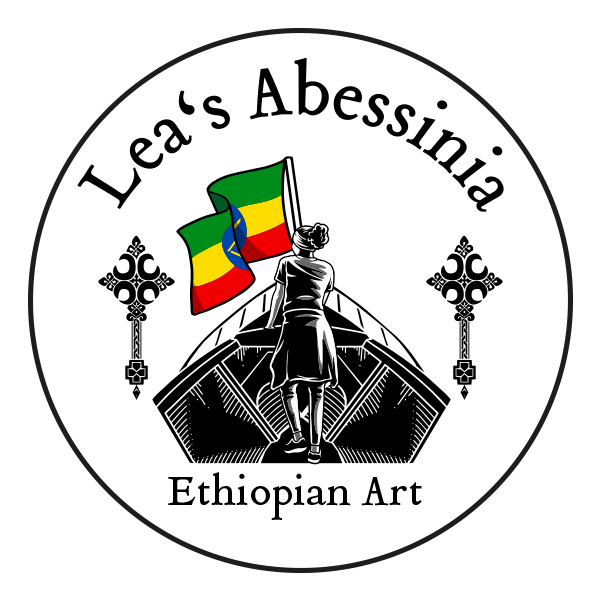A journey through the eras and regions:
Ethiopia, a country rich in cultural diversity and spiritual traditions, has a fascinating history of crosses that are deeply rooted in Ethiopian Christianity. From the ancient sites of Aksum to the ornate crosses of the Lalibela region, these religious artifacts bear witness to a rich history and a complex heritage. Let us take a journey through the eras and regions of Ethiopia to explore the history and trajectory of Ethiopian crosses.
Ancient crosses from Aksum: The cradle of Ethiopian Christianity
The history of Ethiopian crosses begins in the ancient city of Aksum, which is considered the cradle of Ethiopian Christianity. In this thriving trading city, not only the exchange of goods flourished, but also that of ideas and religions. The crosses from Aksum were often made of stone or gold and bear witness to the early practice of Christianity in Ethiopia.
The typical Aksumite crosses were often carved from solid stone and have a simple but powerful form. They are often decorated with symbols and inscriptions that indicate the cultural and religious significance of Aksum. These crosses served not only as religious symbols, but also as political and cultural artifacts that represented the power and wealth of the Aksumite Empire. Today, the majority of crosses are probably made of a metal alloy.
The splendor of the Lalibela crosses: artistic symbols of faith
Another important region for Ethiopian crosses is Lalibela, a city known for its historic rock-hewn churches and ornate crosses. The Lalibela crosses are unique works of art that embody the craftsmanship and spirituality of Ethiopia.
These crosses are often made of metal such as an alloy of bronze and copper or nickel, and silver is also used. The crosses are richly decorated with filigree patterns, religious symbols and Ethiopian geometries. A characteristic feature of the Lalibela crosses is their elegant shape with an outer circle surrounding the arms of the cross. These ornate crosses are not only pieces of jewelry, but also symbols of faith and spiritual connection with the Ethiopian Orthodox Church.
Regional variations and peculiarities
In addition to the well-known regions of Aksum and Lalibela, there are also a variety of crosses with regional variations and peculiarities in other parts of Ethiopia.
In the Tigray region of northern Ethiopia, for example, crosses with unique carvings and decorations are made from fine ebony. These crosses are characterized by their fine details and traditional patterns and are often of great cultural significance to the communities there.
In the southern region of Ethiopia, particularly in the Oromia region, crosses are often made of wood and bear the ornate carvings and decorations of the Oromo culture. These wooden crosses are often decorated with colorful patterns and symbols that reflect the rich cultural diversity of Ethiopia.
The Meaning and Spirituality of Ethiopian Crosses
Ethiopian crosses are not only artistic artifacts, but also deep symbols of faith and spirituality for the people of Ethiopia. They serve as a connection to the divine world and an expression of spiritual connection with the Ethiopian Orthodox Church.
The crosses are not only religious symbols but also cultural artifacts that represent Ethiopia's rich history and tradition. They are symbols of unity and cohesion in a diverse society and serve as a source of inspiration and comfort for believers around the world.
Conclusion: A rich tradition and a living heritage
The history and trajectory of Ethiopian crosses is one of rich cultural diversity, spiritual depth, craftsmanship and skill. From the ancient sites of Aksum to the ornate crosses of Lalibela and the regional variations in Tigray and Oromia, these religious artifacts testify to a living tradition and heritage that continues to this day in Ethiopia and beyond. May these crosses continue to serve as symbols of faith and spirituality and inspire people wherever they are in the world.

